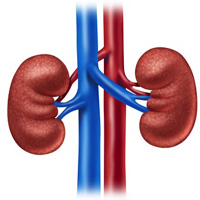The new patterns of nephrolithiasis: What has been changing in the last millennium?

Accepted: May 17, 2021
All claims expressed in this article are solely those of the authors and do not necessarily represent those of their affiliated organizations, or those of the publisher, the editors and the reviewers. Any product that may be evaluated in this article or claim that may be made by its manufacturer is not guaranteed or endorsed by the publisher.
Authors
Nephrolithiasis has been increasing over the last millennium. Although early epidemiologic studies have shown that kidney stones were two to three times more frequent in males than in females, recent reports have suggested that this rate is decreasing. In parallel a dramatic increase of nephrolithiasis has also been observed among children and adolescents. Furthermore, epidemiologic studies have shown a strong association between metabolic syndrome (Mets) traits and kidney stone disease. Patients with hypertension have a higher risk of stone formation and stone formers are predisposed to develop hypertension compared to the general population. An incidence of nephrolithiasis greater than 75% has been shown in overweight and obese patients compared to those of normal weight. It has also been reported that a previous diagnosis of diabetes mellitus increases the risk of future nephrolithiasis. Additionally, an association between metabolic syndrome and uric acid stone formation has been clearly recognized. Furthermore, 24-h urinary metabolic abnormalities have been decreasing among patients with nephrolithiasis over the last decades. Finally, nephrolithiasis could cause chronic kidney disease (CKD) and end stage renal disease (ESRD), especially in women and overweight patients. According to these observations, a better understanding of these new features among stone former patients may be required. Hence, the recognition and the correction of metabolic disorders could help not only to reduce the primary disease, but also stone recurrence.
How to Cite
PAGEPress has chosen to apply the Creative Commons Attribution NonCommercial 4.0 International License (CC BY-NC 4.0) to all manuscripts to be published.

 https://doi.org/10.4081/aiua.2021.2.195
https://doi.org/10.4081/aiua.2021.2.195



